VVS Finance Yield Calculator
Calculate Your Potential Returns
Estimate your earnings from VVS Finance's liquidity pools and staking options. Note: Actual returns may vary based on token price movements and impermanent loss.
Estimated Returns
Important Note: The VVS token price is currently $0.000002089. These calculations are based on the current price.
Impermanent Loss Risk: If the token price fluctuates significantly, your actual returns may be lower than estimated due to impermanent loss.
If you’ve seen VVS Finance pop up on your crypto tracker and wondered what it actually is, you’re not alone. VVS (Very, Very Simple) is a decentralized exchange built on the Cronos blockchain - not some random meme coin, but a working DeFi platform with real users swapping tokens and earning yield. It launched in November 2021 with one goal: make DeFi easy for people who aren’t coders. And for many, it has.
What VVS Finance Actually Does
VVS Finance isn’t a wallet, not a blockchain, and not just a token. It’s a decentralized exchange (DEX) - meaning you trade crypto directly from your wallet without a middleman. Think of it like Uniswap or PancakeSwap, but built specifically for the Cronos network. Cronos is Ethereum-compatible, so it runs smart contracts like Ethereum, but with faster transactions and fees under $0.05. That’s a big deal when Ethereum gas hits $10 or more.
The platform uses automated market makers (AMMs), not order books. That means instead of buyers and sellers matching up, prices are set by math based on how much of each token is in a liquidity pool. You deposit two tokens - say, VVS and USDC - into a pool. Others trade against that pool, and you earn a cut of the 0.2% fee every time someone swaps. You get back your tokens plus rewards in VVS.
The VVS Token: More Than Just a Currency
The VVS token is the heartbeat of the system. It’s a CRC-20 token, which means it runs on Cronos. As of November 2025, the circulating supply trades around $0.000002089. That’s tiny in dollar terms, but with over 140 billion tokens in circulation, the fully diluted valuation sits at roughly $296.5 million.
Here’s how the token supply is split:
- 50% - Distributed to users through farming, staking, and incentives
- 13.5% - Reserved for security audits and protocol operations
- 13.5% - For ecosystem development and partnerships
- 23% - Team, advisors, and early backers (locked over time)
That 50% for users is key. Unlike some projects that hoard tokens for insiders, VVS puts most of its supply directly into the hands of people using the platform. That’s why it’s called “Very, Very Simple” - it rewards participation, not just investment.
How You Earn With VVS Finance
You don’t just buy VVS and hope it goes up. The real value comes from using the platform. There are three main ways to earn:
- Gem Mining - You add liquidity to a trading pair (like VVS/USDC). In return, you get LP tokens. These represent your share of the pool.
- Crystal Farms - You stake those LP tokens to earn VVS rewards. APRs vary wildly - some pools offer 5%, others over 100%. Stablecoin pairs usually give lower but safer returns.
- Glitter Mines - You stake VVS tokens directly to earn more VVS. This is like staking a native token, but with extra rewards from partner tokens.
For example, a user might deposit $100 worth of VVS and USDC into a pool. They get LP tokens, then stake those in Crystal Farms. If the APR is 65%, they could earn $65 worth of VVS in a year - assuming no price changes. But here’s the catch: if the price of one token in the pair drops sharply, you could lose money from impermanent loss. That’s not VVS’s fault - it’s how AMMs work.
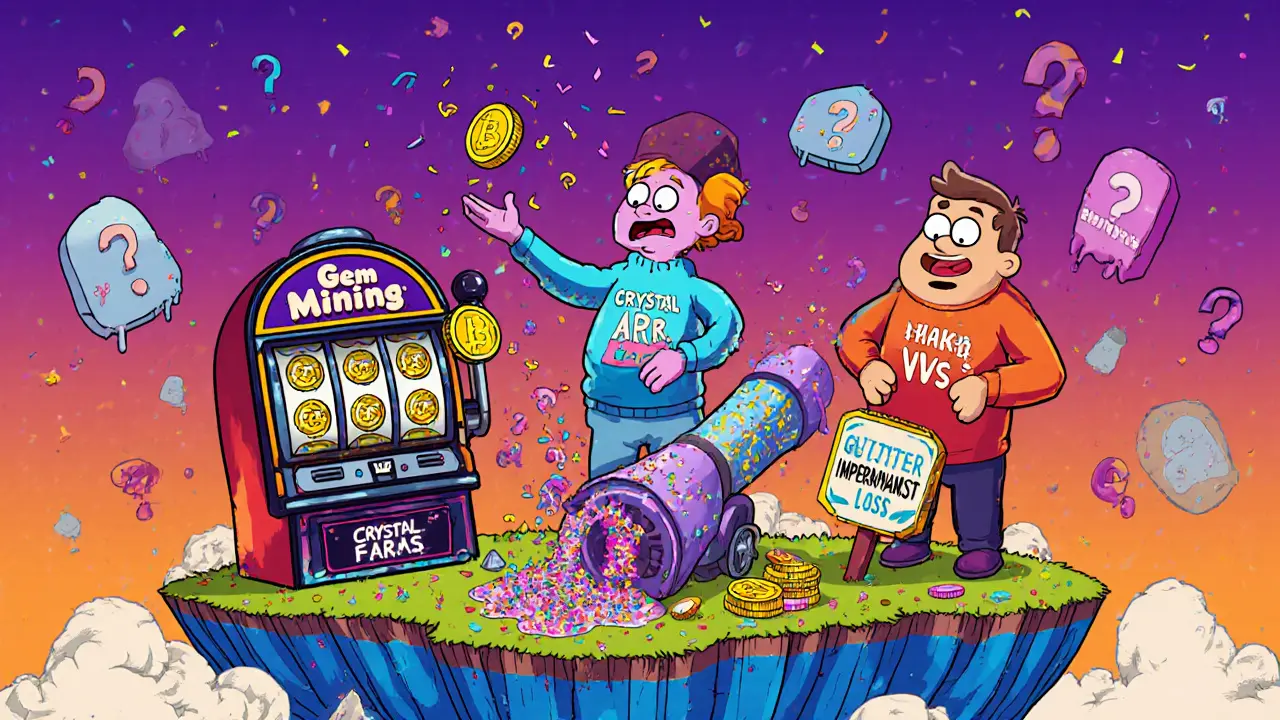
How VVS Compares to Other DeFi Platforms
VVS isn’t the biggest DeFi platform out there. Uniswap has over $5 billion locked in. PancakeSwap moves $800 million daily. VVS? Around $45 million TVL and $8-12 million in daily volume. So why do people use it?
Because it’s simple. And fast. And cheap.
| Feature | VVS Finance | PancakeSwap | Uniswap |
|---|---|---|---|
| Blockchain | Cronos | BNB Chain | Ethereum |
| Avg. Transaction Fee | $0.01-$0.05 | $0.05-$0.20 | $1-$50+ |
| Transaction Speed | 5-7 seconds | 3-5 seconds | 15+ seconds |
| Trading Pairs | ~1,200 | ~10,000+ | 150,000+ |
| Best For | Beginners, low-cost swaps, Cronos users | High volume, NFTs, predictions | Large trades, deep liquidity |
VVS doesn’t have NFT markets or prediction markets like PancakeSwap. It doesn’t have the liquidity of Uniswap. But if you’re just starting out in DeFi and want to swap Cronos tokens without paying $20 in fees, VVS is one of the cleanest options.
Is VVS Finance Safe?
It’s not risk-free. In early 2025, the VVS token dropped 33% in one month. Volatility is part of the game with low-cap DeFi tokens. The platform had three medium-severity smart contract bugs found in 2023 - all patched before any funds were lost. That’s normal in DeFi. No project is bulletproof.
What’s more concerning is its dependence on Cronos. If Cronos loses users, VVS loses users. Cronos has 1.2 million active wallets - solid, but tiny compared to Ethereum’s 100+ million. VVS is the biggest DEX on Cronos, holding 62% of its DeFi liquidity. That’s good for now, but if another platform comes along with better features, VVS could lose ground fast.
Also, the SEC is watching DeFi. If VVS is ever classified as a security token, it could face legal hurdles in the U.S. Right now, it’s treated as a utility token. But regulations change.
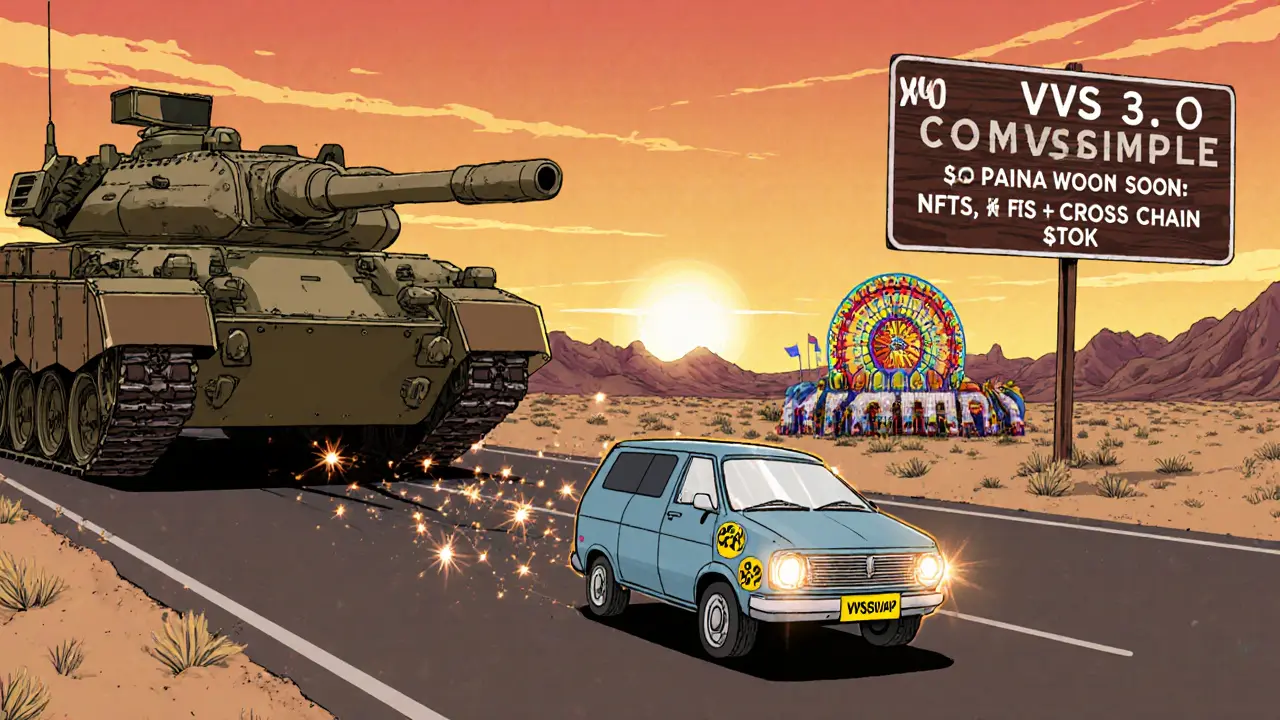
How to Get Started With VVS Finance
You don’t need an account. No KYC. Just a wallet and a few clicks.
- Get a wallet: Trust Wallet, MetaMask, or Crypto.com Wallet.
- Add the Cronos network manually: Chain ID 25, RPC URL https://rpc.cronos.org, symbol CRO.
- Buy some CRO or USDC on a centralized exchange like Crypto.com or Binance, and send it to your wallet.
- Go to vvs.finance and connect your wallet.
- Swap tokens, add liquidity, or stake in Crystal Farms.
Most users report getting set up in under 15 minutes. The interface is clean, with big buttons and clear labels. No confusing menus. If you’re new, start with swapping USDC for VVS - it’s the most liquid pair.
What Users Are Saying
On Reddit, users praise the speed and simplicity. One wrote: “Took me 5 minutes to swap my first tokens. My mom did it without help.”
But others warn about slippage. “I tried swapping a new token and got 4.2% loss in a week, even with 45% APR,” said a Trustpilot reviewer. That’s impermanent loss - not a scam, just the nature of liquidity provision.
Customer support is mostly community-driven. Telegram and Discord have active groups, but official responses can take 72+ hours. If you need help fast, you’re better off asking in the community.
The Future of VVS Finance
VVS 2.0 launched in August 2023, bringing concentrated liquidity (like Uniswap V3) and cross-chain swaps. That was a big upgrade. Now, the team is working on VVS 3.0, planned for Q2 2024. It’ll include:
- A full order book for more precise trading
- An NFT marketplace
- Deeper integration with Ethereum and Cosmos
If they pull it off, VVS could become more than just a Cronos tool - it could be a bridge between blockchains. But that’s a big “if.” The team has delivered on past updates, but DeFi moves fast. Competitors are always catching up.
Right now, VVS Finance is a solid entry point for people who want to dip into DeFi without drowning in complexity. It’s not for traders chasing massive gains. It’s for users who want to swap, earn, and learn - without needing a finance degree.
As one user put it: “It’s not the biggest, but it’s the friendliest.”
Is VVS Finance a good investment?
VVS Finance is not a traditional investment - it’s a DeFi platform. The token’s value is tied to usage. If more people use it to swap or farm, the demand for VVS may rise. But it’s highly volatile. Price predictions vary wildly - some say it could hit $0.00000376 by late 2025, others warn of further drops. Only invest what you can afford to lose.
Can I buy VVS on Coinbase or Binance?
You can buy VVS on centralized exchanges like Crypto.com, Gate.io, and MEXC, but not directly on Coinbase or Binance as of late 2025. You’ll need to use a decentralized exchange like VVS Finance itself, or swap for it on a smaller CEX that lists it. Always check the token address (0x3406521636299898140333783697876384339347) to avoid scams.
What’s the difference between VVS and Cronos (CRO)?
CRO is the native token of the Cronos blockchain - it’s used to pay for gas fees and network operations. VVS is the token of the VVS Finance DEX, built on top of Cronos. You need CRO to pay for transactions on VVS Finance, but you earn VVS as rewards. They serve different purposes.
Why does VVS have such a low price per token?
VVS has a massive total supply - over 140 billion tokens. Even if the market cap is $300 million, dividing that by 140 billion gives you a tiny price per token. That’s normal for DeFi projects. What matters is the total value locked and how much the token is used, not the price per unit.
Is VVS Finance only for crypto experts?
No. VVS Finance was built for beginners. The interface is simple, no KYC is required, and there are step-by-step guides. You don’t need to understand smart contracts to swap tokens or earn yield. That said, you should understand basic risks - like impermanent loss and price volatility - before staking your funds.
What happens if Cronos shuts down?
If the Cronos blockchain stops working, VVS Finance would stop working too. All its data, liquidity, and tokens are tied to Cronos. That’s the biggest risk: VVS is dependent on one blockchain. If Cronos fails, VVS loses its foundation. That’s why many users treat VVS as a short- to medium-term play, not a long-term store of value.
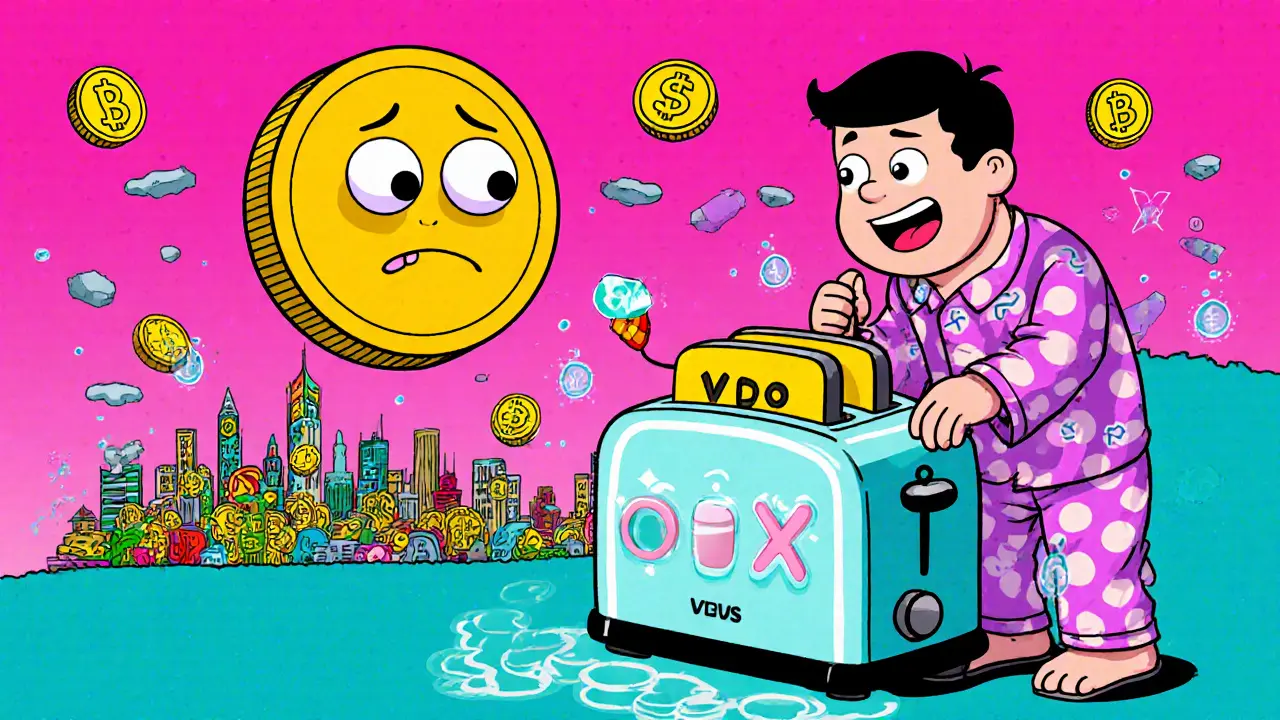


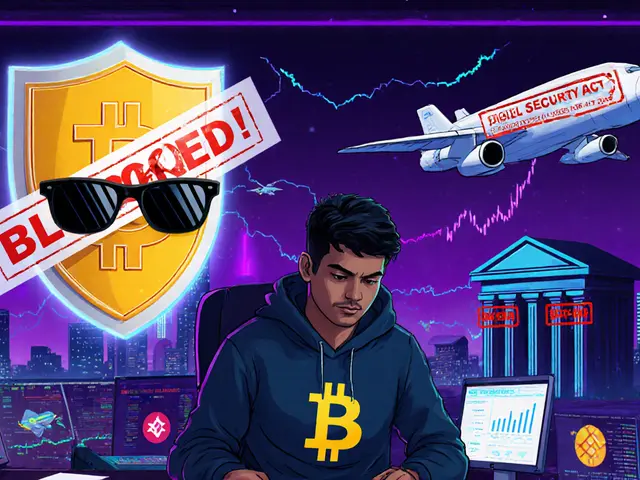
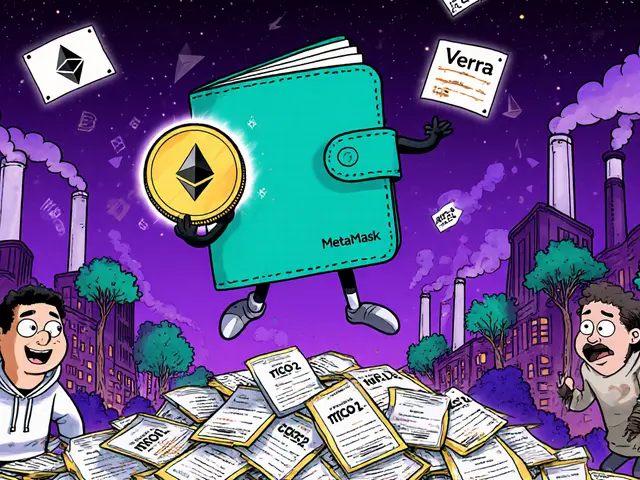
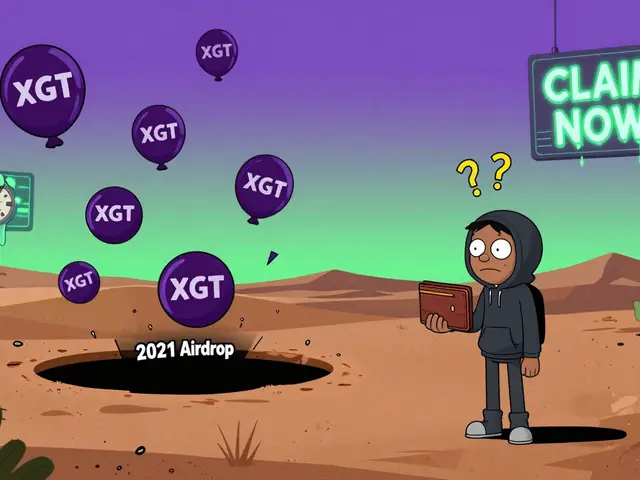
Caren Potgieter
I started using VVS last year after my cousin showed me how easy it is to swap tokens. My mom even did it without help lol. No more paying $10 in gas fees just to trade a little USDC. This thing is a godsend for beginners.